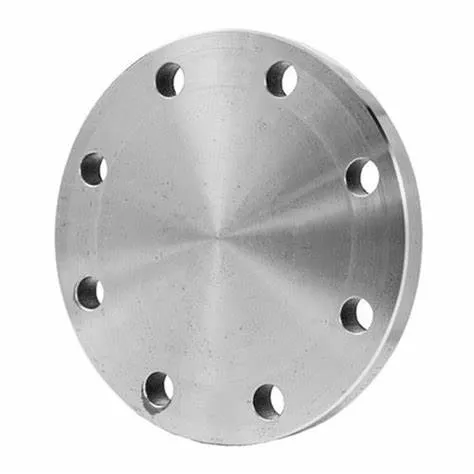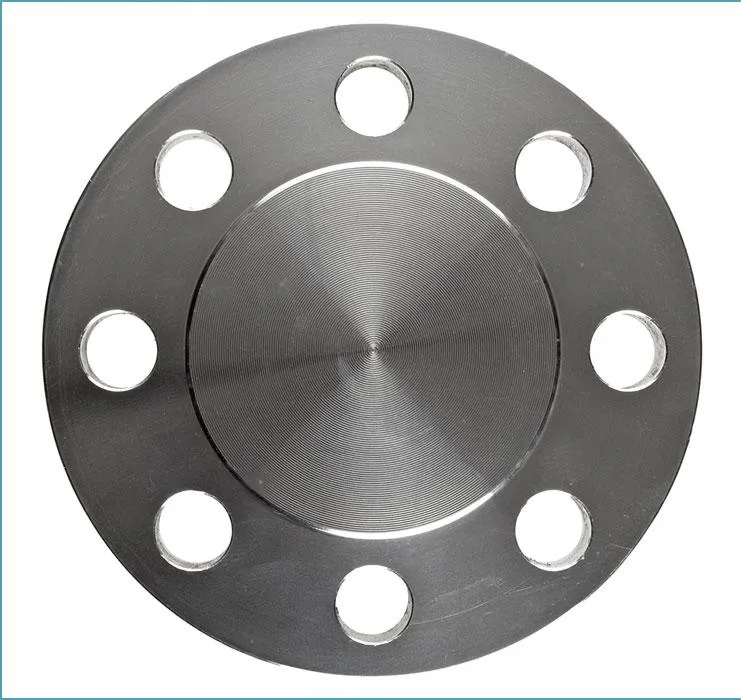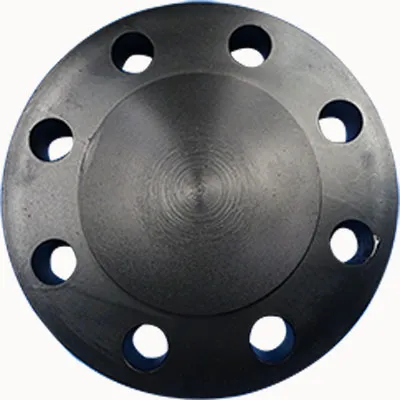Structural features
Overall appearance: The blind flange is circular in shape, similar to the ordinary flange, but there is no through hole in the middle for pipe connection. It is a solid circular flat plate.
Sealing surface: The sealing surface is in the form of a raised surface (RF), which is higher than the flange body, forming an annular sealing plane, which can fit tightly with the raised surface of the matching flange, and achieve good sealing performance through bolt tightening and gaskets.
Bolt holes: There are several bolt holes evenly distributed on the circumference, which are used to pass bolts to connect the blind flange with other matching flanges, so that they fit tightly and ensure the sealing effect.
Material selection
Carbon steel: Such as A105 carbon steel, it has good strength and toughness, relatively low cost, suitable for general industrial pipeline systems, and can withstand certain pressure and temperature conditions.
Stainless steel: Common materials include 304, 316L, etc., with excellent corrosion resistance, suitable for pipelines with corrosive media, such as chemical, food and beverage, pharmaceutical and other industries, can prevent the flange from being corroded by the medium and ensure the safe operation of the system.
Alloy steel: Under certain special working conditions, blind flanges made of alloy steel will be selected to meet requirements such as higher strength, high temperature resistance or low temperature resistance.
Application areas
Petrochemical industry: In the process of petroleum refining, chemical production, etc., it is used to isolate different process units, prevent medium leakage, and ensure production safety. For example, when the device is shut down for maintenance, the blind flange is installed between the pipeline and the equipment to isolate the dangerous medium in the pipeline and provide a safe working environment for maintenance personnel.
Power industry: In the steam pipeline, water supply pipeline and other systems of the power plant, it is used for pipeline isolation and plugging to facilitate equipment maintenance and maintenance.
Pharmaceutical industry: In the pharmaceutical production process, in order to ensure the quality of drugs and the cleanliness of the production environment, blind flanges are used to isolate pipelines to prevent cross-contamination between different drugs and prevent external impurities from entering the pipeline system.
Water treatment industry: In the pipeline system of the water treatment plant, it is used for segmented isolation of pipelines to facilitate operations such as cleaning, repair and replacement of components.
Installation and maintenance
Installation precautions: Before installation, it is necessary to check whether the sealing surface of the blind flange is flat and undamaged, and whether the bolt holes meet the requirements. At the same time, ensure that the sealing surface and bolt holes of the mating flange are completely matched with the blind flange. During installation, the gasket should be placed correctly on the sealing surface, and the bolts should be tightened evenly to make the blind flange fit tightly with the mating flange to avoid deflection or poor sealing.
Maintenance points: Regularly check the sealing performance of the blind flange to check for signs of leakage. If the gasket is found to be aging, damaged or the bolts are loose, the gasket should be replaced or the bolts tightened in time. In addition, according to the operating environment and medium characteristics of the pipeline system, the blind flange needs to be treated with anti-corrosion and anti-rust to extend its service life.

















